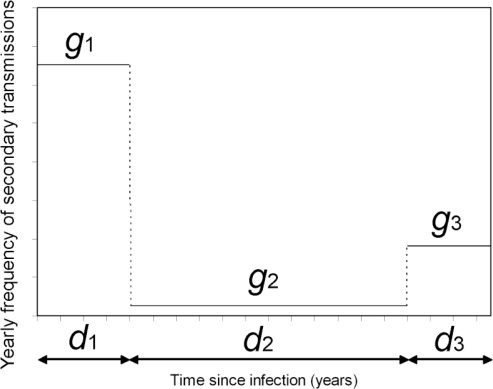Figure 1.
The relative frequency of secondary transmissions of HIV as a function of the time since infection. A step function is employed to approximately model the frequency of secondary transmissions relative to infection-age. For d1 years shortly after infection, the frequency g1 is very high. Subsequently, for d2 years (i.e., during the asymptomatic period), g2 is persistently low, followed by a time period with high infectiousness g3 for d3 years until death or no secondary transmission due to AIDS. Following a statistical study [20], d1, d2 and d3 are assumed to be 0.24, 8.38 and 0.75 years. Assuming that the contact frequency does not vary as a function of time since infection, g1, g2 and g3 are estimated at 1.30, 0.05 and 0.36 per year.

